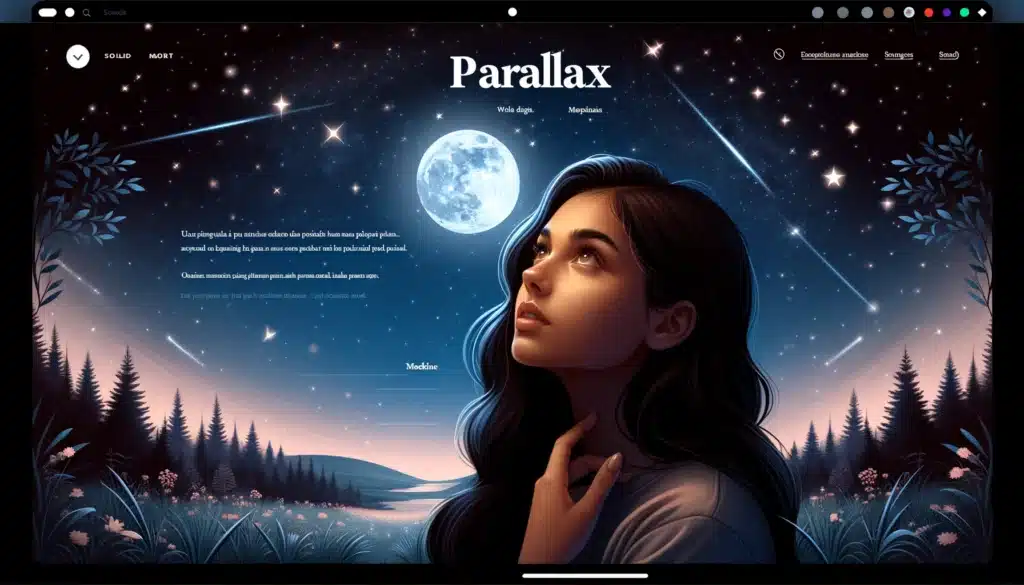
The parallax effect is a phenomenon where the position or direction of an object appears to differ when viewed from different positions. To understand it, think about how your perspective changes when you look at something close up versus far away. If you’re looking at a tree while driving, the tree seems to move fast relative to the background, but distant mountains move slowly. That’s parallax.
The Science Behind Parallax and Vision:
- Binocular Vision: The concept of binocular vision is crucial for depth perception. Each of your eyes captures a slightly different image because they are spaced apart on your face. This separation causes each eye to view objects from a slightly different angle. Your brain processes these two images, allowing you to perceive depth and the three-dimensional structure of your surroundings. This capability is essential not just for humans but for many animals, especially predators, as it aids in tasks like hunting and navigating complex environments.
- Parallax and Depth Perception: The parallax effect in human vision is most noticeable with objects that are close to you. Hold your finger in front of your face and close one eye, then switch and close the other. You’ll notice your finger seems to jump from one position to another against the distant background. This ‘jump’ is due to the different views from each eye, and your brain uses this difference to gauge how far away objects are. This is an everyday example of parallax at work in binocular vision.
- Discovery and Historical Context: The understanding of parallax in a scientific context has been evolving over centuries. The ancient Greeks first discussed the concept of parallax. The astronomer Hipparchus (around 190-120 BCE) is often credited with the early use of parallax to measure the distance between Earth and the Moon. However, the precise understanding and mathematical formulation of parallax, especially in astronomy, developed much later during the Renaissance and the Scientific Revolution.
Astronomical Parallax:
- Historical Development: In astronomy, the concept of parallax is fundamental for understanding the vastness of space. The first successful measurements of stellar parallax were made by Friedrich Bessel in 1838. He measured the parallax of the star 61 Cygni, which was a breakthrough in confirming the vast distances of stars and the three-dimensional structure of our galaxy.
- Modern Usage: Astronomical parallax remains a crucial tool for measuring stellar distances. When Earth orbits around the Sun, nearby stars appear to shift slightly against the more distant background stars. This shift is extremely small for stars – only a few arcseconds (an arcsecond is 1/3600 of a degree). Modern instruments like the Gaia space observatory use this principle to map the Milky Way with unprecedented accuracy.
- Importance in Astronomy: Understanding parallax is essential for astronomers because it provides the most direct and reliable method for measuring the distances to the closest stars. Before the era of space telescopes and advanced parallax measurement techniques, the scale of the universe was largely unknown. Parallax provided the first ‘ruler’ to measure the cosmos.
Parallax in Web Design:
In web design, the parallax effect is used for aesthetic and interactive reasons. When you scroll down a webpage, different layers of the website move at different speeds, creating a sense of depth and dynamism. This isn’t just for looks; it can also guide the viewer’s attention to specific elements, enhancing the user experience.
How It’s Achieved Technically:
On websites, parallax is a visual effect. It’s not about depth perception from our binocular vision, but rather a trick that mimics the parallax principle. This is done using JavaScript and CSS (the languages of the web). By making background images move at a different speed than the foreground content when you scroll, web designers create a sense of depth. This can make websites feel more immersive, like you’re moving through a 3D space.
Why It Became Popular:
Parallax scrolling became popular in web design for several reasons:
- Engagement: It makes the experience of browsing a website more engaging. It turns a static page into something more dynamic and interactive.
- Storytelling: It allows for creative storytelling. As you scroll down the page, the sequential movement can unfold a story or reveal information in a compelling way.
- Visual Appeal: It simply looks cool. The depth and movement can make a website stand out.
The parallax effect in web design is a creative use of motion and perspective to create a sense of depth. It’s inspired by the real-life principle of parallax, where objects appear to move differently based on the viewer’s perspective, and it’s a great tool for making websites more engaging and visually interesting.
Leave a Reply